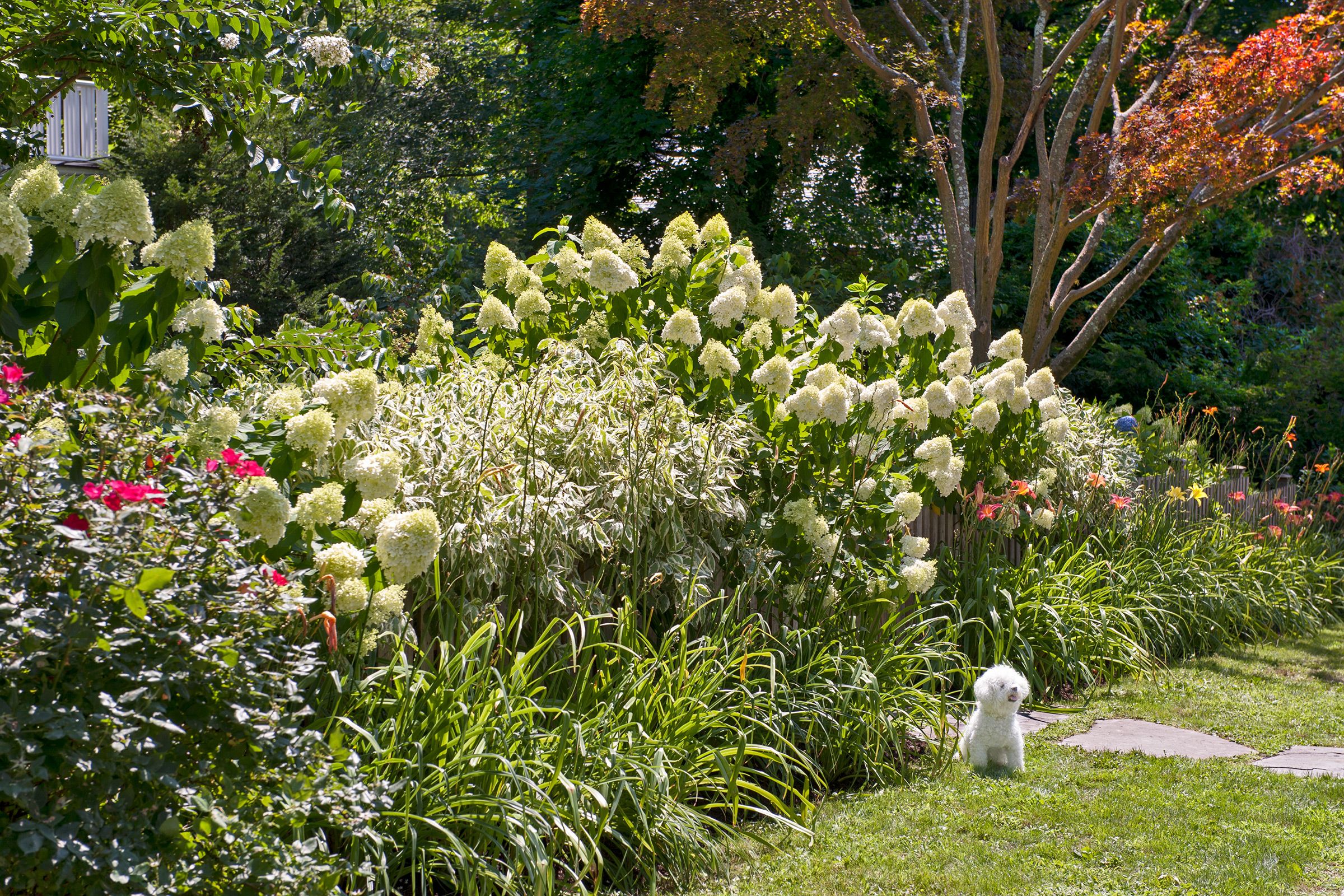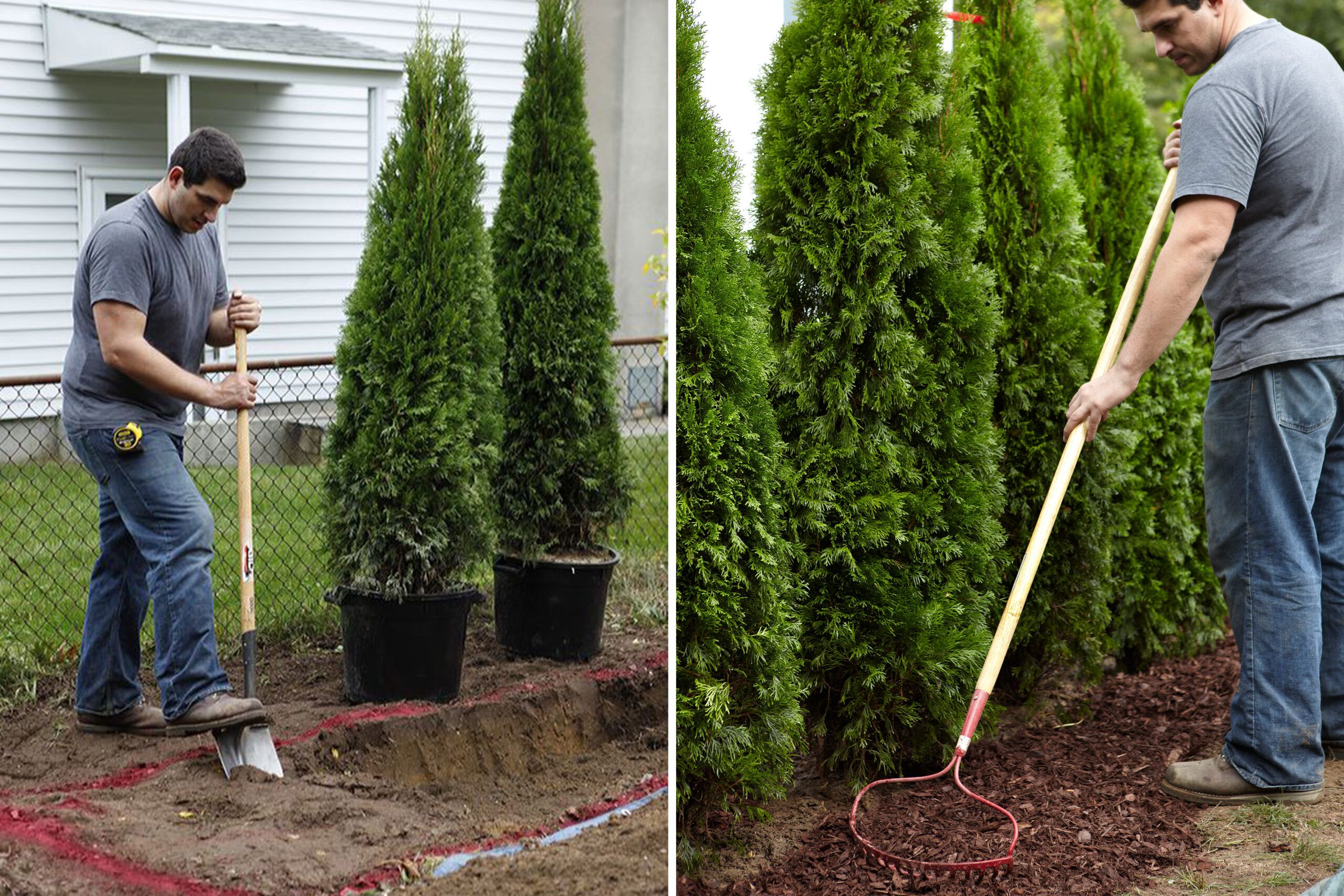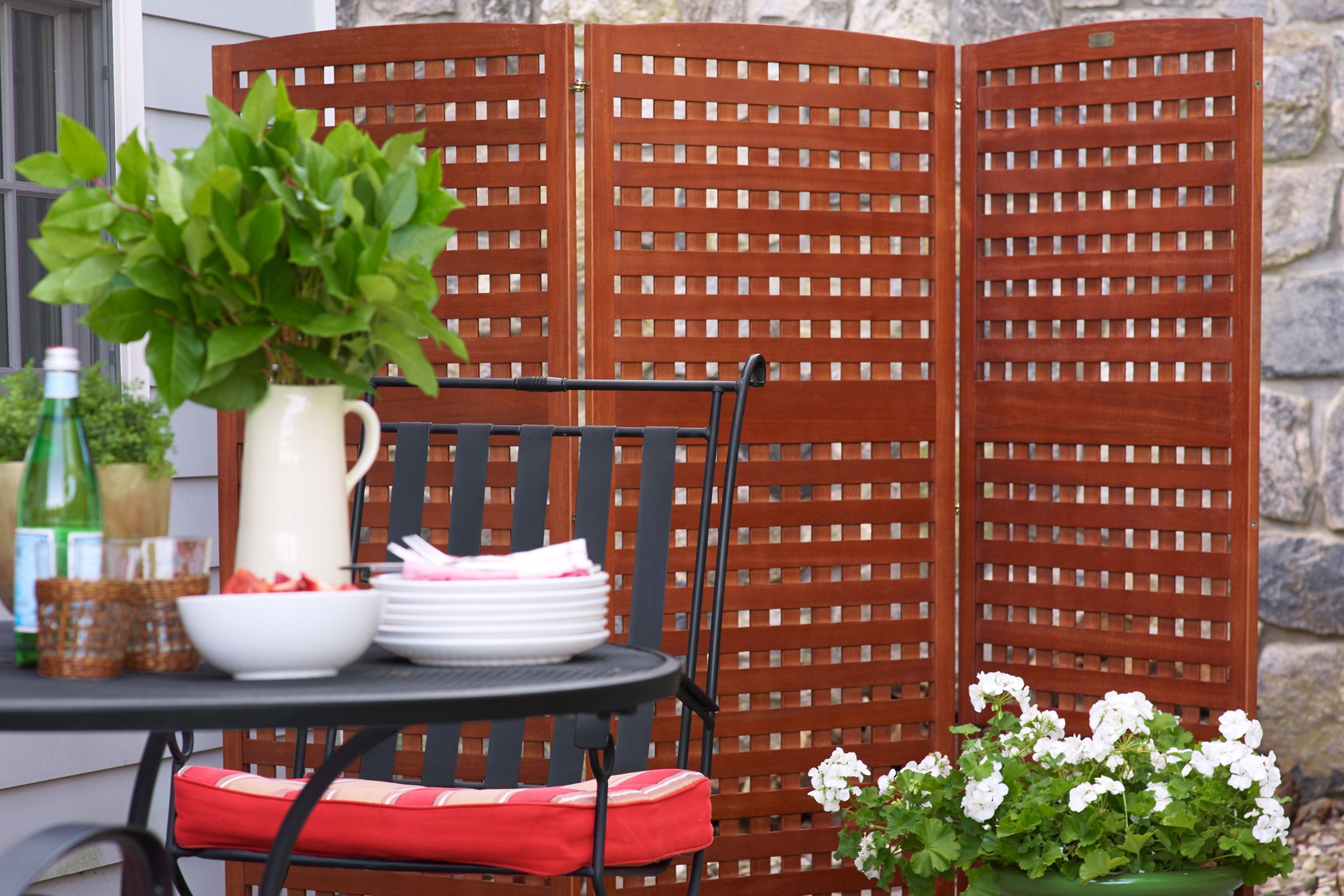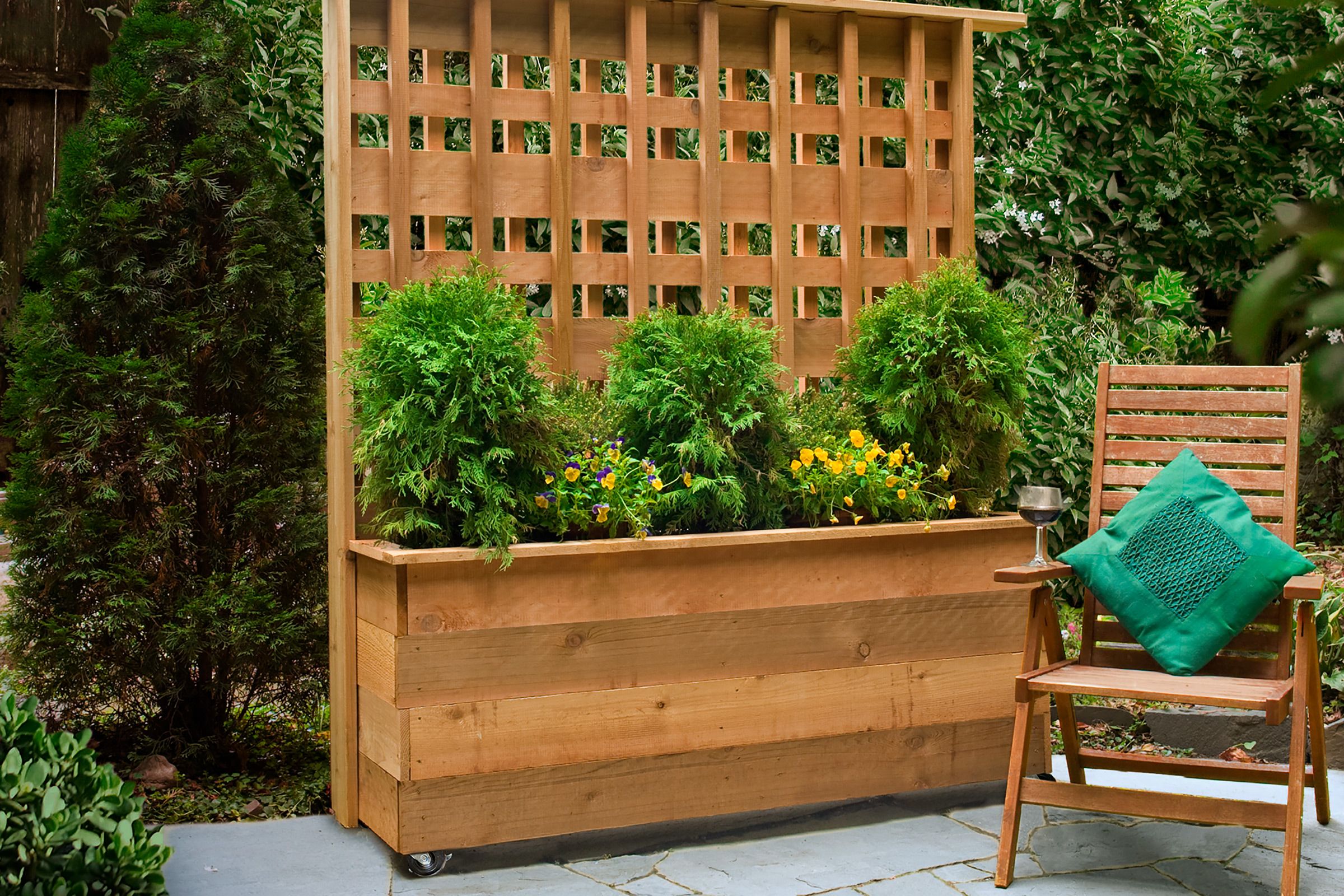Having a private space to relax and unwind in your own backyard is important, but it’s a luxury not every homeowner has. If you want to put a buffer zone between you and your neighbors but are unsure how to do it, we’re here to help.
In this article, we’ll explore four DIY privacy screen projects that can turn your backyard from an open space to a private oasis.
Build a Rolling Privacy Planter
A rolling privacy planter offers a unique solution to create a secluded outdoor space that you can move around and adjust anytime.
Choose a sturdy base material for your planter box. We recommend using cedar or redwood, which are easy to source and stand up well to the elements. Similarly, choose plants that will thrive in your climate, grow quickly, and are dense enough to provide adequate coverage.
If you’re interested in taking on this new project, check out our guide for our step-by-step guide to building a privacy planter.
Plant a Floral Fence for Privacy

Improving an existing fence with lush border plants is a great way to create an inviting yet private yard. If the plants grow tall enough, they become a fence all their own. Add shorter plants to fill in the gaps in your existing fence.
When shopping, we recommend getting a range of plants with similar care requirements that mature at different heights and have varying bloom times. Doing this will create a dynamic and year-round privacy solution.
Here are just a few popular options:
- Daylilies: These flowers offer colorful blooms and grass-like foliage.
- Ivory Halo dogwoods: These plants are known for their variegated leaves and compact growth habit.
- ‘Limelight’ hydrangeas: These flowering plants provide large, showy blooms and dense foliage.
Plant an Easy-Care Privacy Hedge

Plant a privacy hedge using evergreens for low-maintenance, year-round seclusion. Arborvitae shrubs are ideal for this purpose since they don’t need much pruning and can grow up to 15 feet tall.
When shopping for arborvitae, opt for plants that are 6 feet tall or more, which will give you immediate privacy. Also, look for healthy, green foliage and moist roots to ensure they thrive in your soil.
For best results, take these tips:
- Apply a layer of mulch around the base of each plant to retain moisture and suppress weeds.
- Space shrubs 3 to 4 feet apart to allow room for growth.
- Water deeply and regularly, especially during the first growing season.
Make a Folding Lattice Privacy Screen

A lattice screen is easy to move and attractive, making it an ideal form of privacy you can pop up whenever and wherever you need it.
If you’ve decided to build a DIY outdoor privacy screen, we recommend using rot-resistant wood and rust-proof fasteners. Weatherproof it by using outdoor paint, stain, or sealer.
Incorporating Plants Into Your Privacy Screens
No matter what type of privacy screen you prefer, you can always spruce them up with more plants.
Here are a few of our landscape experts’ favorite options:
- Climbing vines: Choose fast-growing vines like clematis or jasmine, which can quickly cover lattice screens or trellises.
- Hanging baskets: Suspend cascading plants from overhead structures for added privacy from above.
- Potted plants: Use large containers with tall plants to create movable privacy barriers.

